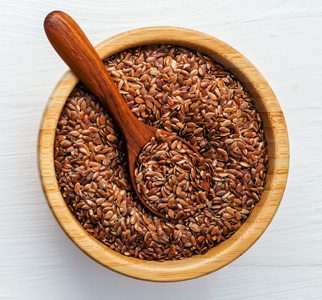Nutrition
3 Super Seeds You Should Be Eating
May 2019
Tiny but mighty: Seeds can be as small as the tip of a pencil but pack a major nutritional punch. Many varieties contain a slew of healthy fats, fiber, and minerals. The best part is that you don’t have to overhaul your diet to get more of these seeds—simply sprinkle them onto foods you’re already eating for a seamless nutritional boost.
Flaxseeds
Flaxseeds are brimming with omega-3s, a type of polyunsaturated fatty acid that may help reduce your risk for coronary heart disease. And—bonus—you have choices when it comes to how you consume flax. You can add ground flaxseed to cereal, yogurt, bread or muffin batter, and even sauces and casseroles. Another option is to drizzle flaxseed oil on cooked grains or use it for dressing your salads.
Chia seeds
The same cha-cha-cha chia seeds that can make a clay dog sprout green fur are surprisingly good for you. The little black specks are rich in omega-3s, protein, calcium, iron, and fiber. They expand quickly after absorbing water, so it’s recommended to eat chia seeds that have already been soaked in liquid or are served with moist food (such as yogurt, oatmeal, or smoothies). Chia seeds are also an effective egg replacement if you don’t eat eggs—combining 1 tablespoon of chia seeds with 3 tablespoons of water creates a gelatinous substance that can be used in place of an egg when baking.
Pumpkin seeds
You don’t have to wait for a chill in the air to eat all things pumpkin—pumpkin seeds are available in many stores year-round. Also known as pepitas, they’re high in fiber (especially if you eat them with the shell), magnesium, zinc, and more. Studies have linked pumpkin seeds with a reduced risk for certain types of cancer, lower blood sugar, and healthier cholesterol and blood pressure levels. Just be sure to choose the unsalted kind to help keep sodium in check.
For a fun way to fit more of these and other seeds into your family’s diet, offer them as “sprinkles” to top whatever’s on their plates.


